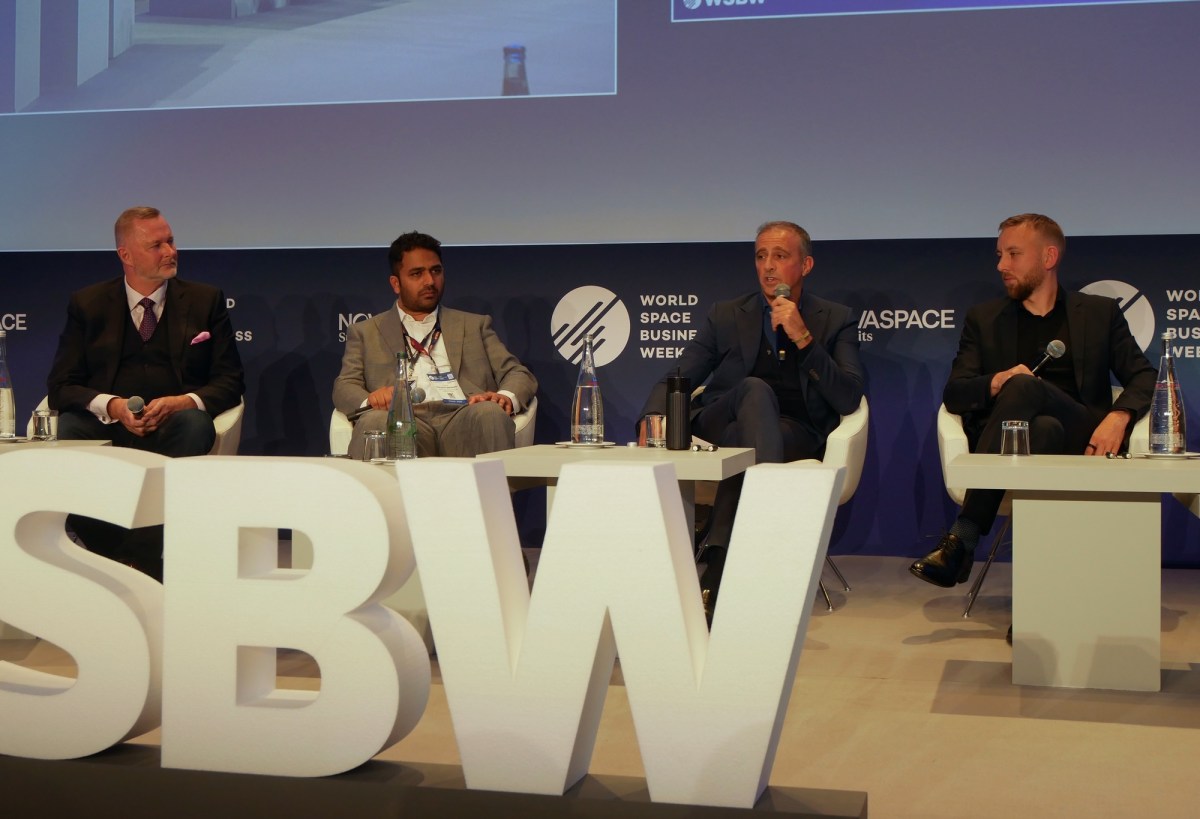PARIS — While some smallsat manufacturers are scaling up production with new factories, others believe smaller, focused facilities are a better investment.
Several satellite manufacturers have invested in recent years on large factories with the capacity for up to several hundred satellites per year, betting on growing demand for such spacecraft for communications, imaging and other applications for commercial and government customers.
But a panel of smallsat executives at World Space Business Week here Sept. 18 was skeptical of so-called “megafactories,” concluding that their capacity far outstrips the accessible market.
“Every month, there’s a new factory setting up to produce 10 satellites per day,” quipped Carsten Drachmann, chief executive of GomSpace. “That great, but who are you going to deliver to?”
He and others were skeptical that there was enough demand to support such facilities, given that the largest constellations are largely being built in-house, like SpaceX’s Starlink and Amazon’s Project Kuiper.
“Mass manufacturing assumes that megaconstellations will be the customers. I don’t believe a megaconstellation will ever outsource their manufacturing of their platforms,” said Walter Ballheimer, co-founder and chief executive of Reflex Aerospace. Those companies, he argued, want to maintain control of satellite production and make changes as needed.
A study released by Novaspace Sept. 17 forecast an average of 3,700 satellites launched annually from 2024 through 2033. However, 65% of those satellites will come from four systems — Starlink and Project Kuiper along with China’s Guowang and Qianfan — that are inaccessible to satellite manufacturers.
Maxime Puteaux, lead author of the Novaspace report, said on the panel that the study found that the total manufacturing capacity of all the suppliers included in the report is two to three times of the demand available to them.
David Avino, founder and chief executive of Argotec, said he did not believe megafactories can provide a suitable return on investment for manufacturers. “Most of these satellites will not be required by the market.”
Some instead advocated for what Ballheimer called “microfactories” that are smaller and more specialized, requiring less capital expenditures or capex to build out. Such facilities can be built in multiple countries to support national programs and, he said, cost “single-digit millions” to complete.
“We think committing a huge capex to one centralized, big factory is counterproductive in terms of government business,” he said. “Many of the clients we see want capabilities to be national. They want to see the satellites produced in their countries. We can do that easily by building small microfactories, which are very cost-efficient.”
Sanjay Nekkanti, chief executive of Indian smallsat manufacturer Dhruva Space, said his company is focused for now on serving Indian customers but is studying how to expand by working with other manufacturers.
“What are the future things that we can produce out of the facility?” he said, taking advantage of Indian initiatives in privatizing space capabilities to offer its factory to foreign manufacturers looking to expand. “It’s important to look at how our factory could cater to global markets.”
